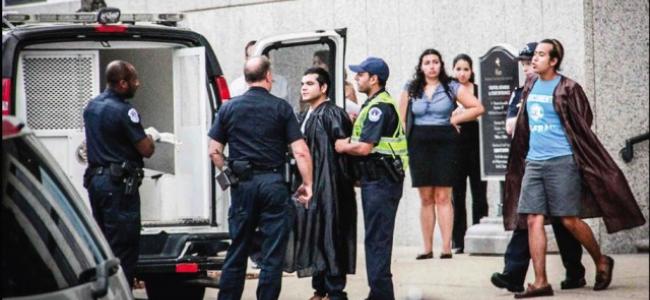The National Immigrant Youth Alliance (NIYA) infiltrates immigration detention centers in the United States in order to find prisoners who are eligible for release and advocate for them.
Dream Act Failure Sparks NIYA Activism
There are many undocumented immigrants in the United States. The issue has become a divisive political topic in recent years. In December 2010, the House of Representatives passed the Dream Act. This would have allowed permanent residency for undocumented youth who met certain conditions. However, the bill failed to pass the Senate. Facing an immigration detention system under serious strain, the Obama administration indicated that it would focus on deporting only undocumented immigrants convicted of a crime. John Morton, head of Immigration and Customs Enforcement (ICE), interpreted this direction to mean that low-priority cases could be dismissed. Immigrants eligible for release under the “Morton memos” became the target of NIYA activists.
Three young undocumented immigrant activists founded NIYA after the initial failure of the Dream Act in 2010. They were fed up with what they saw as ineffective tactics used by their fellow dreamers. NIYA’s primary goal is to challenge the detention and deportation of ordinary, nonviolent undocumented immigrants. In order to identify and help these immigrants, NIYA members began infiltrating detention centers. Their first mission was to Broward Transitional Center near Fort Lauderdale, Florida.
 Photo from an article by Michael May titled Los Infiltradores, borrowed from the book by Steve Pavey and Marco Saavedra, Shadows Then Light, that chronicles the undocumented youth movement in words and pictures.
Photo from an article by Michael May titled Los Infiltradores, borrowed from the book by Steve Pavey and Marco Saavedra, Shadows Then Light, that chronicles the undocumented youth movement in words and pictures.
Inside Broward: Activists Fight for Detainees’ Release
The activists chose Broward for several reasons. It was considered a model detention center. Detainees had flat-screen TVs in their rooms and could move freely about the compound. Yet the activists wanted to argue that many of the detainees housed there were eligible for release under the Morton memos. In addition, the activists had a connection inside Broward: the father of a friend who was a natural organizer and a likely Morton memo case.
In order to gain access to Broward, one male activist and one female activist posed as typical undocumented immigrants. They pretended to be looking for work or inquiring about an arrested friend, in the process letting slip that they were also undocumented. This led to their arrest and detention. Once inside the facility, they began interviewing the other detainees. They distributed a hotline number that the detainees could call to provide details about their cases. Information passed to activists on the outside, who started calling the family members of the detainees and figuring out who had the strongest Morton memo cases. They began to build campaigns around those cases. They set up internet petitions, contacted local media, organized vigils, worked with families and church groups and called lawmakers.
Medical Neglect and Abuse Exposed at Broward
One detainee NIYA helped was an undocumented woman who had arrived in the US at age 12. She had later been abused by her husband. She had been arrested on questionable charges and taken to Broward. However, she had been raped and was experiencing excessive menstrual bleeding. After a month, she was too weak to walk and was finally taken from Broward to the hospital. Doctors gave her a transfusion and operated on her ovaries, then sent her back to the detention center. However, the follow up care she received was not sufficient and she was found a few days later in a bathroom in a pool of her own blood, leading to another hospital stay. Throughout this experience, the woman received remarkably little sympathy from the Broward attendants, who ignored her and made jokes at her expense. With help from the NIYA team, she was released from the detention center in less than a month.
The NIYA activists were eventually discovered and released, but they continued to work on the Broward cases. They estimate that their activities helped to free between 40 and 60 detainees. It is impossible to know if these releases were a direct result of NIYA intervention since immigrants could have been released for other reasons and there were other activist groups working on their cases. However, there was a significant and often inexplicable uptick in releases from Broward after NIYA got involved.
Challenges and Risks of this Tactic
NIYA’s tactic was not without challenges. Surprisingly, it proved somewhat difficult for the infiltrating activists to get themselves arrested. One infiltrator had to try several different methods of attracting police attention before he was apprehended. More importantly, the infiltrators, themselves undocumented immigrants, risked deportation. They had to balance their desire to help others with the danger they brought upon themselves. Once inside the detention center, it was not always easy to get detainees to talk. Female detainees in particular were reluctant to share their stories, often because they were facing situations of domestic abuse outside the detention center. Finally, despite NIYA’s success in getting individual detainees released, large-scale detention center reform remains incomplete, and nation-wide immigration reform seems a political impossibility.
Learn more about how this tactic was implemented by listening to the This American Life audio clip or by reading the article Los Infiltradores by Michael May.